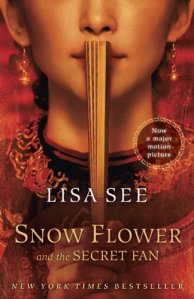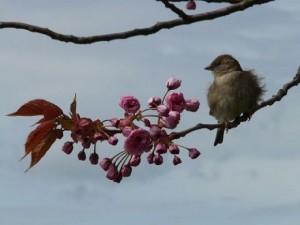Their world may be limited and their spirits bound as tightly as were once their dainty feet, but Chinese women remain a powerful force.
A Most Worthy Woman
In the Chinese culture it is reputed females are not as valued as they are in the West. I cannot personally vouch for this, but have long heard that this is true, and has been for centuries.
Despite this assertion stories of strong and influential Chinese women abound. From peasants to empresses, Chinese women keep their houses in order, ensure the safekeeping of ancient traditions, lobby for a more prosperous future for their children (both male and female), and support their cultural heritage even more stridently than do their husbands, fathers, or sons. Their world may be limited and their spirits bound as tightly as were once their dainty feet, but Chinese women remain a powerful force.
Lisa See’s fantastic Snow Flower and the Secret Fan offers us a magnificent glimpse into the society of mid-19th century Chinese women with all of its joys and pains.
The Story
The narrator Lily is the second daughter of a farmer. She is believed to be a worthless mouth to feed, a child tolerated only for her value as a future mother of sons. This view is not unique to Lily’s family: a female child is viewed only in terms of the cost to feed, clothe, and house her until she may be “married out” to the best match. Thereafter, her value grows only if she bears male heirs.
As the daughter of a farmer, Lily’s prospects for a life better than her parents’ are dim. Her family is poor and barely able to sustain their children through the best of times.
However, Lily’s fate is forever altered with the appearance of a matchmaker from a nearby village who, seeing something special in the pretty face and perfect feet of the 6-year-old Lily, proposes a bold match: not yet with a potential husband (which will come in time), but with a laotong – another female child. The match with a laotongis believed to be more important than a marriage and something to last throughout the girls’ lives. This laotong is Snow Flower, a child of Lily’s age (both born in the Year of the Horse, on the same day of the same month, and allegedly at the same hour: all great omens for a successful match), whose life circumstances are far above those of Lily. This formal tie with Snow Flower will bring great prestige and opportunity to Lily and her family. What the match brings for Snow Flower is a mystery that Lily does not wish to explore: she is thrilled and willingly cultivates a friendship with her lovely and cultured laotong Snow Flower.
Told in retrospect, as an 80-year-old woman of means, Lily reveals two intimately interwoven lives. Her memories are vivid as she weaves the tale of the timid yet fervent beginnings of friendship between the girls, of the brutal custom of foot-binding, of learning the many cultural norms and duties these two children and all other Chinese females must endure and adopt to achieve their greatest value in life. Through it all, Lily speaks of the secret writing, the nu shu, which has enabled Chinese women for centuries to express their true feelings and needs to one another despite the cultural taboo against doing so.
The friendship of Snow Flower and Lily is wondrous and flawed, bringing both of the girls-turned-women great joy and sorrow throughout their lives.
The Appeal
The beauty of this story is not only the richness of Ms. See’s writing, but the seamless introduction of Chinese culture and history into its very fabric. Just as Lily and Snow Flower learn the art of embroidery with which they embellish their clothes and gifts, Ms. See stitches together facts about Chinese beliefs and taboos into a loving story of these two little girls as they become women.
The inter-sanctum of the upstairs room where the women spend most of their waking hours is enlivened with love and discipline, joy and heartache, hopes and dreams just as the warp and weft of a tapestry adds to its depth. There is great beauty alongside tragedy in Snow Flower and the Secret Fan.
Seen through the prism of age, Lily has a realistic view of herself: Snow Flower and the Secret Fan is not presented as a self-serving memoir of the farmer’s daughter who would become a grand lady. Although not proud of her flaws, the ancient Lily reveals her inner self without flinching. Her love of Snow Flower is expertly and intimately presented like the opening of a lotus blossom; her anger at what she believes to be Snow Flower’s betrayal burns from the pages.
Ms. See offers a complex portrait of two lives forever joined in love and tragedy, in hope and despair. Her touch is light, but true as the reader is led through the years, echoing the steps of the girls on their bound “golden lilies.”
Learn more about the ancient tradition of foot-binding, as featured in Snow Flower and the Secret Fan, in this fascinating hub by bakerwoman.
The author receives no remuneration from any sale of this book.

